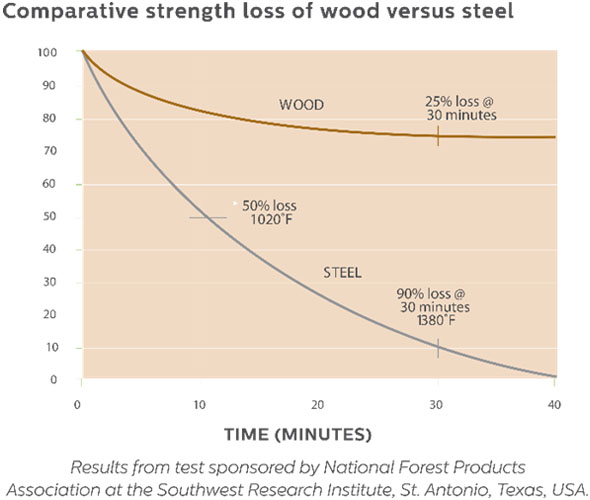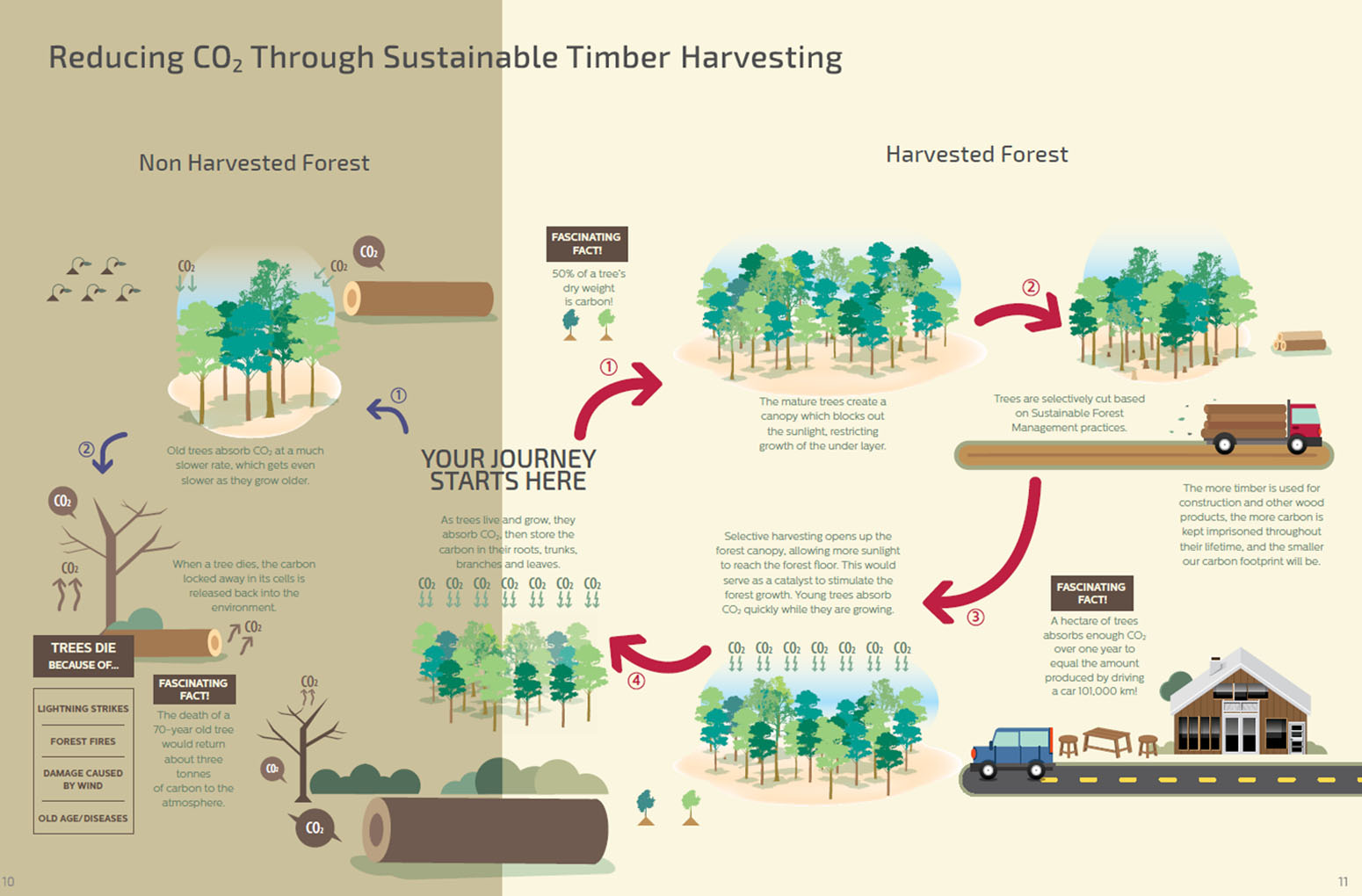Man’s relationship with timber has been nurtured for thousands of years. Timber is arguably the most versatile building material, allowing itself to be transformed beautifully for numerous applications, from structural to decorative and aesthetic.
And yet, there is a misperception that using timber contributes to the destruction of the environment. Many people believe that to be socially and environmentally responsible, they must leave the forests standing and avoid using timber altogether. It is true that irresponsible exploitation of forests will not contribute to the earth’s long term health. Nevertheless, what many people do not realise is that using sustainably harvested timber will in fact help in combating climate change, caused by the excessive release of carbon dioxide into the atmosphere.
Positive Attributes of wood
Strength
Modern engineered timber products like Glued Laminated Timber (Glulam) and Cross Laminated Timber (CLT) allow wood to be used in constructing high-rise buildings. Currently, the world’s tallest timber building is a ten-storey apartment called Forte in Melbourne. In the pipeline are plans to build a 34-storey timber building in Canada.
Durability
Timber can be treated to make it harder, termite-resistant or weather-resistant. Treatment can be done by impregnating wood with certain chemicals which are effective yet safe for use by humans. This process is widely available and is affordable. Treated timber will often out-last naturally durable timbers
Excellent Insulator
Wood requires minimal external energy to keep a building within the thermal comfort zone of its inhabitants. Wood is six times better than brick as an insulator; eight times better than glass; 15 times better than concrete; 390 times better than steel and 1,700 times better than aluminium.
Performance in Fire
The speed and ease of ignition is dependent on the rate of accumulation of heat at the surface of the wood. Several factors influence this rate and they are the size of the piece of wood, the rate of heat loss from the surface, the presence of thin outstanding edges and the rate which heat is supplied to the surface of the wood. Small pieces with sharp projecting edges, such as matches, ignite easily. On the other hand, large pieces, with round edges, like a round Glulam column catch fire at a much slower rate. In buildings with engineered timber panels, heat does not conduct from one side of the panel to the other.


Acoustic Properties
Wooden panels and timber flooring are commonly used to improve the acoustical properties of a room. They are used to reduce noise and improve the quality of sound in spaces such as auditoriums and theatres.
Versatility
The fact that trees grow according to the natural environment they are in means that there are thousands of grains and shades to choose from globally, providing an excellent choice for architects, builders and interior designers.
Energy Efficient

Reducing CO2 through Sustainable Timber Harvesting

The ‘Green’ Credentials of Wood
Carbon Sequestration
However, mature trees absorb less CO2 than young trees. Harvesting mature trees will open up the forest canopy, enabling younger trees to grow, thereby absorbing more carbon from the atmosphere.
Climate Change Mitigation
Carbon Locking
Building with wood causes much lower CO2 emissions than building with conventional construction materials. No other mainstream building material does this.